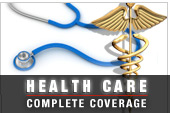It’s one of the more common and expensive health care incidents. Over 6 million times a year, someone appears on a hospital emergency room doorstep complaining of severe chest pain, thinking he or she is having a heart attack.

An initial battery of blood and electro-cardiogram tests sometimes confirms that fear. But more often than not, those tests are inconclusive and the patient is asked to hang around for additional testing. That can be either a stress test (where the patient runs on a treadmill), a few hours of waiting or, increasingly, a more expensive CT scan of the blood vessels surrounding the heart, which can determine if the person is suffering acute pain from a coronary artery blockage or is simply having a bad case of indigestion.
It turns out that those approaches are equally effective at turning up actual cases of “acute coronary syndrome,” which can be either an actual heart attack or a case of unstable angina, according to a trial published in this week’s New England Journal of Medicine. While the CT scans can reduce patients’ time in the emergency room, it can also run up costs for the health care system, which critics say can be avoided with just as good results simply by sending people home without any kind of testing.
According to the authors of the study, people getting the CT scans spent 7.6 fewer hours in the emergency room. They were also exposed to increased amounts of radiation, subjected to more downstream testing and were more likely to receive pricey hospital interventions like cardiac catheterization to clear blocked arteries.
The bottom line was that the mean cost of the hospital stay rose from a range of $3,900 to $5,300 under standard care to $4,000 to $6,800 in the CT scan group, an increase of anywhere from $100 to $1,500 (because of its wide range, it was deemed not statistically significant).
Udo Hoffmann, director of cardiac imaging at Massachusetts General Hospital and lead author of the study, agreed the automatic CT scan added about $600 to a visit and led to more in-hospital care, but insisted the extra cost was worth the effort. “The CT scans are detecting more (coronary artery) disease and more subtle degrees of disease,” he said. “The knowledge about plaque and stenosis has some tremendous prognostic uses.”
Upon discharge, Hoffman pointed out, the patient can be urged to schedule an appointment with their regular physician who can use that knowledge about the state of their arteries to offer drug treatment – usually cholesterol-lowering drugs – and a lecture on the importance of better eating habits and exercise to reduce the likelihood of a future heart attack.
The study was the second this year to appear in NEJM touting the benefits of conducting CT heart scans in the emergency room. This latest one drew a sharp rejoinder from an accompanying editorial by Rita Redberg, a cardiologist at the University of California at San Francisco.
“The underlying assumption of the studies is that some diagnostic test must be performed before discharging these low-to-intermediate-risk patients from the emergency department,” she wrote. “This assumption is unproven and probably unwarranted.”
Neither test – the stress test or CT imaging – changed outcomes. Just 8 percent of patients who sought emergency room care for chest pain were actually having a heart-related event, and less than 1 percent were actually having a heart attack. “The decision regarding the need for diagnostic testing in these patients usually can be safely deferred to outpatient follow-up within a few weeks after the visit to the emergency department,” Redberg wrote. “The vast majority of patients have no cardiac causes for their chest pain, and many need no further testing.”
However, that is unlikely to be the takeaway message from this year’s barrage of studies justifying CT scanning of the 6 million people who show up every year at the emergency room with severe chest pain. Raise the cost by anywhere from $100 to $1,500 per incident and you’ve raised health care system costs by anywhere from $600 million to $9 billion a year.
Redberg suggests a different approach. If you want shorter stays in the emergency room – after all, that was the primary benefit of CT scanning – send people who do not fail the initial tests home with a prescription to go visit their doctor as soon as they can. It will not only save the patient more time, it will save them and the health care system money.


